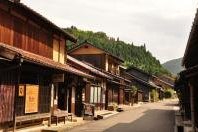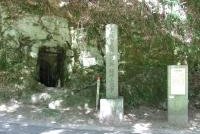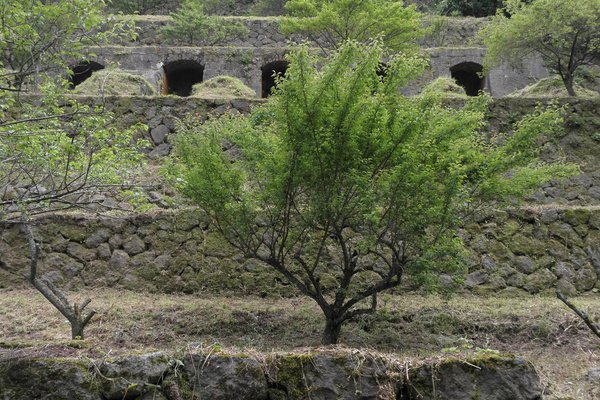Japan
Iwami Ginzan Silver Mine
Iwami Ginzan Silver Mine and its Cultural Landscape is a relict mining landscape that used to produce large amounts of silver and led to an exchange of ideas and trade with East Asia and Europe.
The silver production to shipment process was based on small-scale, manual operations. The well-preserved remains include mines, smelting and refining sites, settlements and ports.
Community Perspective: the site is centered around the remote town of Omori, but it can be reached by a 2.5-hour bus from Hiroshima. It is well-equipped to receive visitors and foreigners get a reduction on the entrance fee! None of the reviewers were in awe, and Peter has a conspiracy theory to share on how this got inscribed. Philipp managed to visit 13 of the 14 components.
Site Info
Official Information
- Full Name
- Iwami Ginzan Silver Mine and its Cultural Landscape (ID: 1246)
- Country
- Japan
- Status
-
Inscribed 2007
Site history
History of Iwami Ginzan Silver Mine
- 2007: Advisory Body overruled
- ICOMOS had asked for Deferral, to study the mining technology used and to strengthen its claim for OUV due to cultural exchange
- 2007: Inscribed
- Inscribed
- Type
- Cultural
- Criteria
- ii
- iii
- v
Links
- UNESCO
- whc.unesco.org
- Official
-
- ginzan.city.ohda.lg.jp — Iwami Ginzan
- Related
-
- kankou-shimane.com — House of the Kumugai Family
- kankou-shimane.com — Rakanji Temple
- pref.shimane.lg.jp — Set of photographs of many of the elements of the WHS
All Links
UNESCO.org
- whc.unesco.org — whc.unesco.org/
Official Website
- ginzan.city.ohda.lg.jp — Iwami Ginzan
Related Resources
- kankou-shimane.com — House of the Kumugai Family
- kankou-shimane.com — Rakanji Temple
- pref.shimane.lg.jp — Set of photographs of many of the elements of the WHS
- kankou-shimane.com — Town of Omori
- archaeology.jp — Maps showing the locations of many of the elements (which the UNESCO maps do not)
- japan-guide.com — Good practical information on how to visit and what to see
News Article
- April 13, 2018 mainichi.jp — A magnitude 6.1 earthquake on April 9 caused damage to 12 locations inside the World Heritage Iwami Ginzan Silver Mine site
- Sept. 24, 2008 mdn.mainichi.jp — Environmental problems at Iwami Ginzan WHS due to an increase in the number of tourists to the area.
- June 29, 2007 yomiuri.co.jp — The UNESCO World Heritage Committee on Thursday designated the 16th-20th century remains of the Iwami Ginzan silver mine World Heritage cultural site, reversing an earlier recommendation by an advisory panel to postpone the honor.
Community Information
- Community Category
- Secular structure: Mines
- Cultural Landscape: Relict
Travel Information
Hiroshima Hotspot
Recent Connections
-
Mines which can be visited underground
Silver, Ryugenju Mabu mine shaft (walk… -
Hiroshima Hotspot
(via direct bus to Omori, 2.5 hours one… -
Japanese garden
Garden of Kumagai Residence, an example…
Connections of Iwami Ginzan Silver Mine
- Geography
-
-
Hot Springs
Yunotsu Hot Spring Town -
Sea of Japan
The site includes three ports: Tomogaura, Okidomari, and Yunotsu "To the south-west of Honshu Island, just inland from the Sea of Japan, is a cluster of silver-bearing mountains, rising to 600 metres and interspersed by deep river valleys." - AB Document
-
- Trivia
-
-
Dragon
Ryugenji Mabu Mine Shaft (Ryugenji = The Dragon Source Temple)
-
- Architecture
-
-
Japanese garden
Garden of Kumagai Residence, an example of Japanese garden in merchant class residence
-
- World Heritage Process
-
-
Minor modifications after inscription
2010 - a number of small changes, including the addition of "the small promontory, beach and inner harbour as the original mooring and landing place at Yunotsu for the Iwami Ginzan mine"
-
- Religion and Belief
-
-
Religious sites connected to fishermen
Ebisu Shrines at Okidomari and Tomogaura (part of Iwami Ginzan) are dedicated to Ebisu, Shinto God of fishermen.
-
- Human Activity
-
-
Silver production
-
Sea Ports
Port for silver mines -
Man-made Terraces
"... over 1,000 man-made flat terraces, large and small, have been identified. The flat areas are the sites of workshops where silver production was carried out" (nom file) -
Breweries
Wakabayashi Brewery in Yunotsu, part of Iwami Ginzan was established in 1869. Its specialty is a sake they call Kaishun.
-
- Constructions
-
-
Tombs
Many miners' tombs can be found in forest around temples on the way from Omori to Ryugenji Mine
-
- Timeline
-
-
Built in the 16th century
the Iwami Ginzan Silver bearing seams were 'discovered' in 1526, and almost immediately developed (AB ev)
-
- WHS Hotspots
-
-
Hiroshima Hotspot
(via direct bus to Omori, 2.5 hours one way)
-
- Science and Technology
-
-
Mines which can be visited underground
Silver, Ryugenju Mabu mine shaft (walk along old tunnel)
-
News
- mainichi.jp 04/13/2018
- A magnitude 6.1 earthquake on Apri…
- mdn.mainichi.jp 09/24/2008
- Environmental problems at Iwami Gi…
- yomiuri.co.jp 06/29/2007
- The UNESCO World Heritage Committe…
Recent Visitors
Visitors of Iwami Ginzan Silver Mine
- AC
- Adam Hancock
- Alex Goh
- Atila Ege
- Bamse
- BaziFettehenne
- Bill Koo
- Celina Nanbara
- chenboada
- Christravelblog
- CugelVance
- cutecid
- Els Slots
- Erik Jelinek
- Errol Neo
- Eva Kisgyorgy
- Fan Yibo
- Frederik Dawson
- GeorgeIng61
- henrik_hannfors
- henryjiao18
- Iain Jackson
- Joel on the Road
- Jonas Kremer
- Jon Bauer
- Kurt Lauer
- Lee Kai Loong
- Loic Pedras
- Lukasz Palczewski
- Luke LOU
- M.HATADA
- nan
- Nihal Ege
- Patrik
- Pchxiao
- Philipp Peterer
- Randi Thomsen
- ReallyDeepThoughts
- Sergio Arjona
- Shandos Cleaver
- Stanislaw Warwas
- Svein Elias
- Taotao Chen
- Tcchang0825
- Thomas Buechler
- triath
- Tsunami
- usagi1974
- Wojciech Fedoruk
- Xiong Wei
- Xiquinho Silva
- Zoë Sheng
Community Reviews
Show full reviews
As all reviews so far have only covered Omori, which is for sure the most interesting part of this WHS, I will focus on the other components. I visited 13 of the 14 components and it involved quite some hiking. Iwami-JoI left my car where google maps leads you off the main road. Around a hundred meters up the side road there is an unmarked path that leads right into the forest. Follow the plastic markers you sometimes find bound to the trees up the hill. It seemed not many people follow the path, so you get the real Indiana Jones feeling. The castle remains is just a spot with a bit less trees and a small sign in Japanese that says Iwami-Jo. Luckily I had data connection to translate the sign. Other than that, there were tons of insects and nothing else. Only go there if you are as crazy as I am. TomogauraIt’s a tiny seaside village. I left my car in Maji, a village next to it with a nice beach, at the only place that was officially marked as parking. It wouldn’t have been necessary. You could drive right to the village and leave it at the port. There was nobody around and the village is really just 5 houses. To reach it you have to pass a narrow tunnel. I walked all the way along the beach and through the tunnel (that includes tons of cockroaches) to admire the 5 houses and the …
Keep reading 0 comments
On a day trip from Hiroshima, I visited the Iwami Ginzan silver mine. In the 18th century Iwami Ginzan was one of the largest silver mines of the world and a small town grew around it. The mine itself or the shrines for the miners aren't spectacular. The town (Omoricho), though, was nice with plenty of historic wooden houses some of which are open to visitors. In the area, you can manage everything on foot. However, to see the additional components related to the shipping of the silver, you will need some form of transport as these are on the coast.
Iwami Ginzan feels underwhelming compared to other silver mines, e.g. Goslar. Goslar has a huge mine plus many historic mining buildings including the Kaiserpfalz. Even if I compare it to a lesser silver mining site like the Erzgebirge, Iwami Ginzan is tiny. However, maybe that's the key bit here. Japan industrialized late in the 19th century and before that was a feudal, backward society.
Getting There
Main transport hub for the area is Hiroshima (on the East/South coast). The train station is on the main high speed rail line and connects you to all parts of Japan.
From Hiroshima you can catch a daily bus to Odashi on the north/west coast. The bus stops along the way in Iwami Ginzan. Details are found here. Or contact the Hiroshima tourist office for help. The bus at my time of visit had a big banner of …
Keep reading 0 comments
The Iwami Ginzan silver mine was at the heart of a boomtown in the south-west of Honshu Island in the 1600s. But then its fortunes faded and a nearby forest drew in after the mine closed in 1923. By the 1970s, Iwami resembled a ghost town, and might have been forgotten, but for the Yen signs in the eyes of the tourist authorities. In 2007, after intense lobbying in Tokyo, a hole in the ground, of which most Japanese were entirely unaware, joined the ranks of the Taj and the Great Wall of China as a World Heritage Site.
So how did Iwami ever make the list? How does any site get "inscribed", to use Unesco-speak? If there is one fatal flaw in the whole process it is that countries submit their own nominations for inclusion. So when local businessman Toshiro Nakamura made it his life's mission to turn Iwami into a tourist attraction, the suits at the local prefecture were all ears. They used their links with diplomats in Tokyo to make a case for Iwami within Unesco's World Heritage Committee.
Keep reading 0 comments
Matsue can also serve as a base to explore the Iwami Ginzan silver mines.It has a beautiful castle and a wide range of accommodation options.Local trains via Izumo to Odashi and from there by shuttle bus every half an hour to Omori, the silver mine town with its beautifully restored old wooden houses, museums and old residences of rich families who made their fortune with the silver trade.
Gohyakurakan cave temple contains about 500 stone statues of Buddhist disciples and is one of the highlights of a a leisurely stroll through the village.
Check out the beautiful stone bridges in front of the temple.
Much further up is the Ryugenji Mabu shaft from where in the 17th century big quantities of silver was extracted.The shaft can be visited from one side to the other, but even in summer time it can get quite cold.The 5km return walk to the underground tunnel can be done by foot or by renting bicycles.
I also visited the Izumo Taisha shrine on my way back to Matsue, its not included in the Unesco list, but definitely worth the detour, since it is one of the oldest shrines in whole of Japan.
Keep reading 0 comments
I found it weird that this site is one of the least visited UNESCO sites in the world, as remote as, say, Ogasawara. But after I came to Hiroshima station tourist information and asked them how to visit Iwami Ginzan, they immediately told me the way. I may confirm Frederic Dawson’s description that this site is easily accessible from Hiroshima for one day trip. The buses (as of April 2013) run from Hiroshima train station at 10:00 (12:40 at Iwami) and 14:55 (17:35), where buses back from Iwami are at 7:52 and 16:22. Although I found the bus price a bit too high (6000 JPY for roundtrip), Iwami Ginzan is definitely worth visiting.
I started my visit from World Heritage Center (the only place where foreigners are handicapped in ticket price), where I was provided with tablet explaining the exhibition in English. This is a good start to understand the history of the place and familiarize with miners’ day life. Then we moved by local bus to Omori town to see Ryugenji Mabu Mine Shaft, the main mine shaft in the area. I was surprised that the mine shaft could be easily visited even with baby-stroller (I travelled there with my wife and infant son). Then we moved back to Omori walking in picturesque landscape between traditional Japanese houses. In Omori I strongly recommend visiting Rakan-Ji Temple with hundreds small Buddha monuments (each one different).
Although we were the only non-Japanese tourists that day, there were lots of Japanese excursions …
Keep reading 0 comments
Japan is one of my favorite destinations, after a great personal winter tour to Northern Japan early this year; I never imagined that I would have a business trip to this country again in the same year, and with no hesitation I immediately planned to visit Iwami Ginzan, the only World Heritage Site on Honshu Island that I have not seen yet. Reading Els’s and John Booth’s review, Iwami Ginzan seems to be very hard to visit and quite complicated for means of transportation, but actually the place is very easy to go. Iwami Ginzan is one of the few tourist attractions in Japan, that tourists need to look for alternative transportation instead of its superb train system, and the answer for Iwami Ginzan is the reliable and comfortable long-distance bus. From Hiroshima Train Station, there are direct buses connecting the city to the village of Omori and Iwami Ginzan World Heritage Center within 2.5 hours making a possible one-day trip!
After many beautiful views of countless almost ready to harvest rice fields, my bus finally took me to Omori, the chief village of Iwami Ginzan, the first thing I did was to rent a bike and ride to Raganji Temple to see the cave temples, the caves and the statues inside were quite nice to see, then I continue my trip to Ryugenji Mabu Shaft, the sample silver mine that open for casual tourists. The mine was really cold inside even I visited in the summer …
Keep reading 0 comments
It’s no miracle that only one of our regulars (hi John!) arrived here before me. The Iwami Ginzan (“ginzan” meaning silver mountain) is located on the northern coast of Honshu, in an area without big cities. The shinkansen takes the route along the south coast, swiftly passing this formerly remote region. To reach it, I took a regular train from Okayama to Izumo (3 hours), and then it takes another local train (45 minutes) and a local bus (25 minutes) to get to Omori – the village at the heart of this WHS.
They are prepared though to receive visitors. The lady at the information office at Odashi station came running out to me at the bus stop to supply me with several glossy brochures in English. One of these included an offer that I had not encountered on my travels before: foreigners get a discount! If you show your passport to prove that you’re not Japanese, you get 100-300 Yen off at each of the major sites to visit in the WHS area.
I started my visit at the lower end of Omori town. One of the first older buildings here (the Former Magistrate’s Office) holds the Iwami Ginzan Museum. A 20-minute video in English was started for me. It explained Iwami Ginzan’s history, but quite superficial and I did not get more from it than by reading the nomination file during my preparation. The OUV of the site is a bit sketchy, and ICOMOS had recommended …
Keep reading 0 comments
To reach the main part of the Iwami Ginza silver mine I took a bus to Omori Ginzan from Odashi station. The walk up to the Ryugenji shaft was interspersed with interesing buildings related to the operation of the mine. The Ryugenji shaft has been enlarged and illuminated to accommodate visitors, but what amazed me were the other shafts visible in the bush, but closed off with steel barriers. These were tiny by comparison, and the miners had to crawl through these with candles for illumination, and chip away at the silver ore.
Another part of this WHS that I visited was Yunotsu, a port from which the silver was exported to Korea and other parts of the world. Today it is a sleepy fishing village, and still contains many old wooden houses, inns and commercial buildings. It is just a short walk from Yunotsu station.
Keep reading 0 comments









